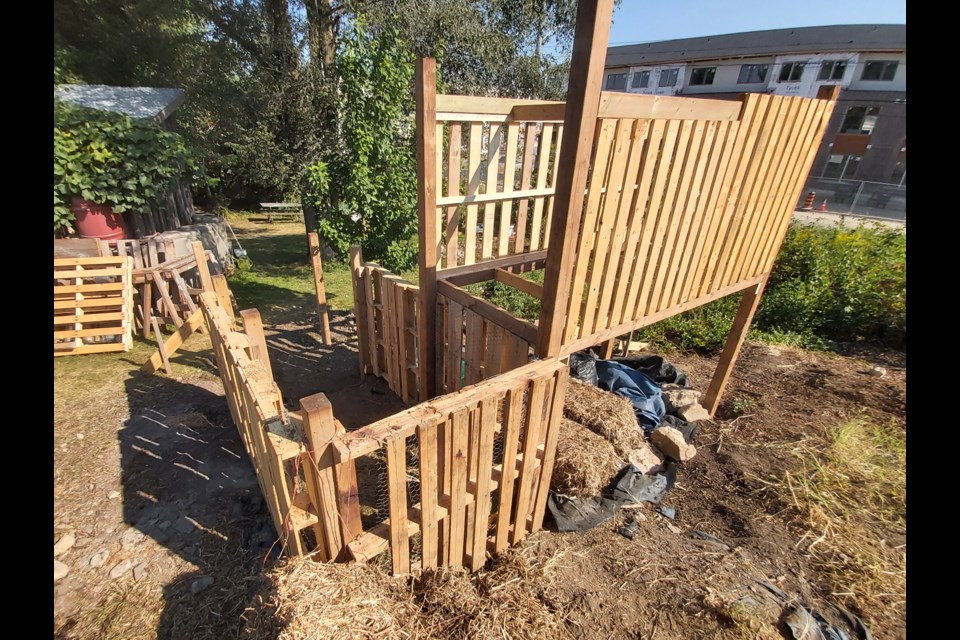The “pile” of debris has been replaced with a more fulsome composting system at Huron Street Community Garden, thanks to the efforts of numerous volunteers and material donors – the benefits of which stretch far beyond the neighbourhood, says Karen Houle, an environmental ethics professor at the University of Guelph.
A proper composting system not only decreases the cost for gardeners by producing nutrient-rich soil, it assists in the battle against climate change by preventing methane off-gassing of organic materials and helping establish healthy vegetation that removes carbon from the air.
“It’s doing the right thing with green waste,” said Houle, who lives in the area and volunteers her time at the community garden as one of the 'Compost Queens of the Royal City.'
“It helps the environment in a huge way.”
Dubbed a “compost makeover,” about 50 people turned out at Huron Street Community Garden in The Ward last weekend for a community event that saw much of the wooden composting system created, as well as a mixing and mingling of people from a variety of age groups and backgrounds.
“I thought it was absolutely fantastic,” said Houle of the event, adding, “The best it could possibly be.”
People contributed in a variety of ways, from physically building the structure to assisting with sign-in, providing insights and participating in a drumming circle.
Prior to the new system, gardeners would typically toss their clippings and unwanted plant materials into a pile between trees on the site. That, however, is not the right way to compost, Houle said.
There are a variety of problems with such piles, she said. Among them are the types of materials that are often discarded, including weeds and diseased plants, which don’t belong in compost.
“It’s really, really hard to do that education piece with community gardens,” said Houle. “The gardeners are never there all at the same time.”
There’s also issues with getting the right mix of materials to create quality compost.
“The volume of organic green waste in community gardens is a real challenge,” Houle said, explaining proper composting involves a mixture of green and carbon-based materials such as straw, saw dust, chipped up branches and small pieces of cardboard.
Additionally, there’s compost on the bottom of the pile but people would need to move “a ton” of stuff from on top in order to get to it, which makes it virtually unusable for many, she said.
Since many community gardens use the pile method for composting, Houle hopes others throughout the city learn from the experience of Huron Street Community Garden volunteers and are able to adopt a more fulsome process themselves.

.png;w=120;h=80;mode=crop)

